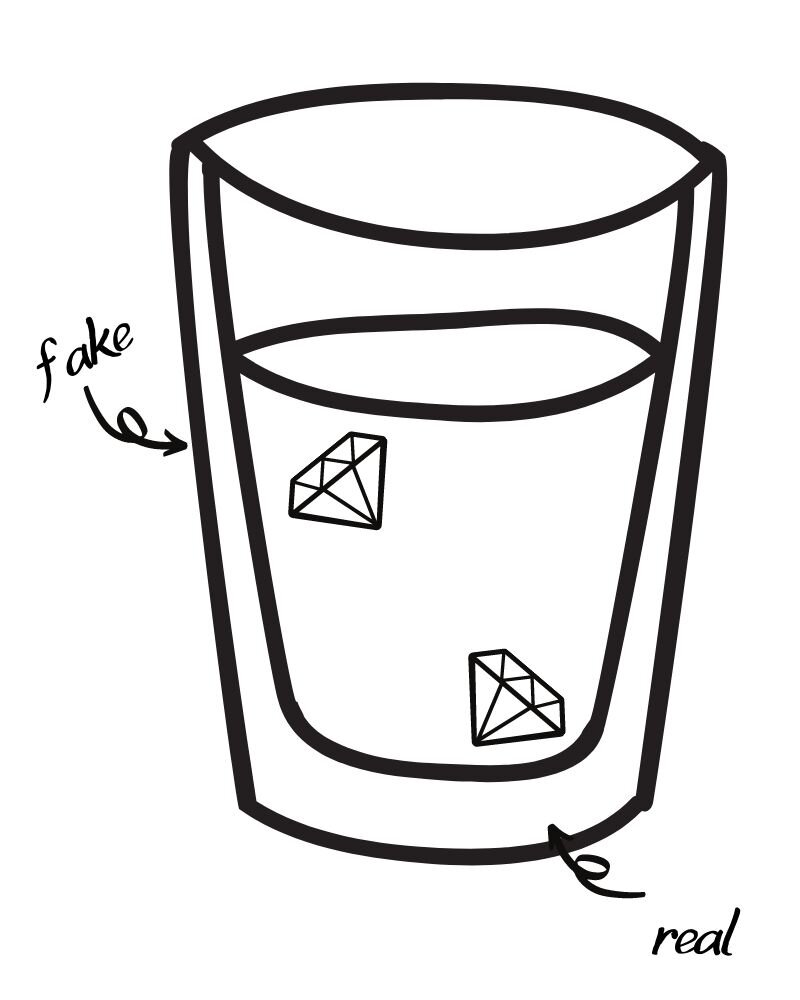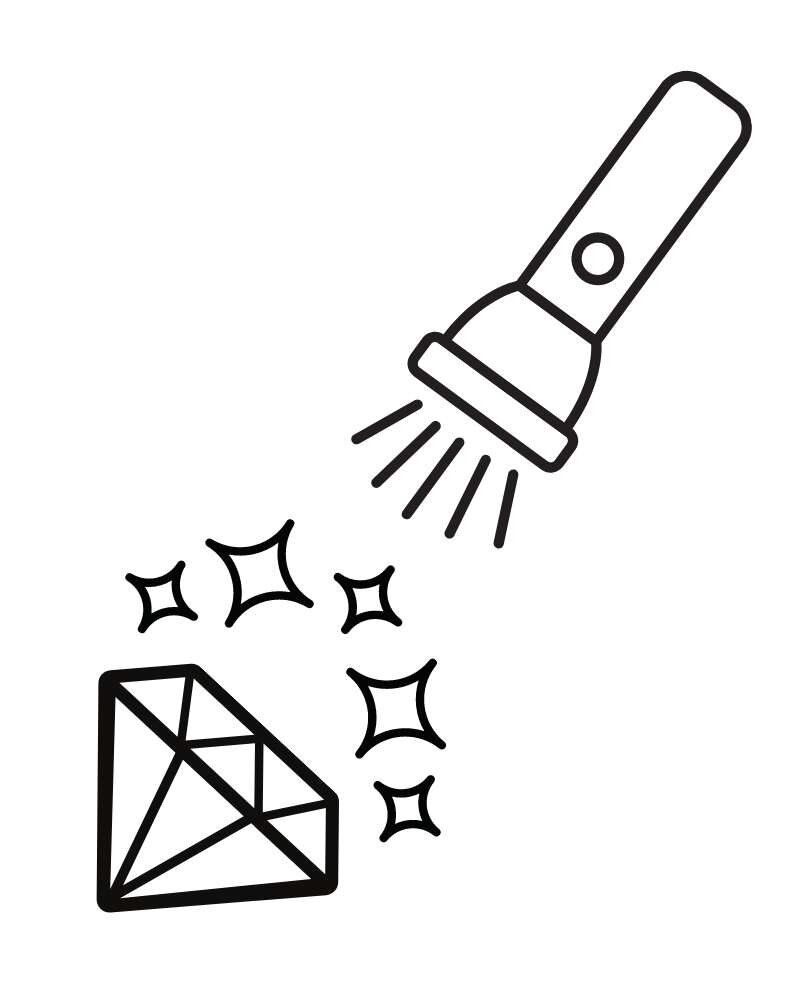Complete Guide: How to Tell if Your Diamond is Real (9 at Home Tests)
We humans have gotten very good at creating stones that look extremely like diamonds but aren’t the real thing. Beauty is in the eye of the beholder, but looks can be deceptive. Here we run through nine simple tests you can try right in your own home to see if you have a diamond on your hands. First, let’s cover the competition.
Common Diamond Dupes
There are a few culprits that appear frequently as possible candidates for diamonds. Those that are often confused are white sapphires, moissanites, cubic zirconia, and garnets. When considering purchasing or selling any stone, it’s important that you are aware of the different characteristics of each, to avoid overpaying or selling under value.
The scratch test used to be a great way to determine if you have a real diamond. This involves taking the diamond and attempting to scratch a mirror. If it leaves a mark on the mirror, it’s a real diamond. However, the quality of false stones like cubic zirconia and moissanite has increased, and many can pass this test due to their durability. We recommend trying any or all of the tricks below to find out if your diamond is real instead.
=
Is it a Real Diamond? 9 Tests You Can Try at Home to Find Out
Test your diamond using the water test
As straightforward as it sounds, fill a glass of water at home to roughly three-quarters full. Separate the stone so that it is loose, and drop it into the water. Diamonds are highly dense and a genuine gem will sink to the bottom – every time. If it hovers to the surface or only partially sinks, then it is a replica.
Test your diamond using the fog test
Diamonds are excellent heat conductors and so will disperse any warmth extremely quickly. Hold the stone in between two fingers and breathe on it. A light fog should form on its surface due to the moisture and heat. How quickly this fog dissipates will tell you if it’s legitimate or not, the rule of thumb is that the longer it takes to disappear, the less likely you are to have a genuine diamond. The fog should dissipate right away if the diamond is genuine.
Test your diamond by investigating the mount and settings
Diamonds are extremely valuable, and in the case of jewelry, they will only be mounted onto valuable metals like yellow or white gold, platinum, or in some cases, silver. Looking inside the ring, you will see different markings depending on the metal used which indicates purity level. For you, the higher, the better. If you see “CZ” then you will know with complete certainty that the stone is cubic zirconia. Better luck next time.
Use the heat test to see if your diamond is real
Due to the chemical makeup of diamonds, they are unresponsive to high heat or swift temperature changes. This at-home experiment requires a pair of heat-resistant gloves, pliers, a glass of cold water, and a lighter. Put on the gloves, hold the stone within the tongs of the pliers, and heat the stone with the lighter for approximately 1 minute. Then drop the stone into the glass of cold water. Due to the rapid expansion and contraction demanded by the temperature changes, a weaker material will likely break whereas a diamond will remain fixed and unchanged. Only do this if you don’t mind breaking your gem if it is not a real diamond.
See if the diamond is real using the black light test
Place your possible diamond under a UV light and look for the color that emits. Diamonds can produce a soft blue glow. This test isn’t as reliable as the others as there can be a variance in the results. A genuine diamond can also reproduce absolutely no glow, so it’s important to take the results of this test with a grain of salt.
Testing your diamond using the newspaper test
Lay a section of newspaper flat on the table, ideally with a lot of text. Lay the loose stone on top of a text-heavy area and see if you can read what is beneath. If you can read the lettering below easily, then you have a fake. Diamonds will refract the light around them in different directions and so you won’t be able to see through them clearly to the words beneath.
Try the dot test for diamonds
No newspaper, no problem. An alternative to the newspaper test is the dot test. Take a blank piece of paper and draw a dot in the middle. Place the loose stone flat side down on top of that dot. If you look down at the stone and you can see a circular reflection of the stone, then it’s a fake. As diamonds refract light, with a true diamond, you won’t be able to see anything.
Use the sparkle test to see if your diamond is real
Sparkle test - this only requires a lamp, your eyes, and possibly a confirmed fake stone as a control. Hold the stone in question up to the light of a lamp. Note the quality and manner in which the stone reflects the light. Does it shimmer, sparkle? Do you see only white light or colorful reflections as well? Diamonds reflect white light extremely well, and by being able to compare it to cubic zirconia, for example, you should be able to see a dramatic difference.
Using a loupe to test your diamond
Yes, we know - not everyone has one of these lying around. A loupe is essentially a jeweler’s magnifying glass. You can find them on Amazon at a reasonable price. This tool allows you to investigate the diamond on a microscopic level. What you’ll be looking for are imperfections. Most real diamonds have small imperfections, like little flecks of minerals or subtle changes in color. Diamonds made in laboratories do not have these imperfections, therefore this is a great way to test your diamond. If you find that it doesn’t have imperfections, more than likely it is a fake. However, you may have a very rare, perfect diamond as well, so we suggest combining this test with any of the tests above.
These tricks are simple, inexpensive, and effective. The best way to know if you have a real diamond is to take it to an expert. The specialists at Gray’s offer complimentary valuations. You can feel secure knowing that you will get a trusted opinion from experienced professionals.
Stay informed about the exciting and ever-changing world of art and auctions - whether you’re a seasoned collector or just getting your feet wet. We curate & deliver the most essential & exciting art and auction news, once a week (in a way that won’t make you fall asleep.) Sign up via the form below!




